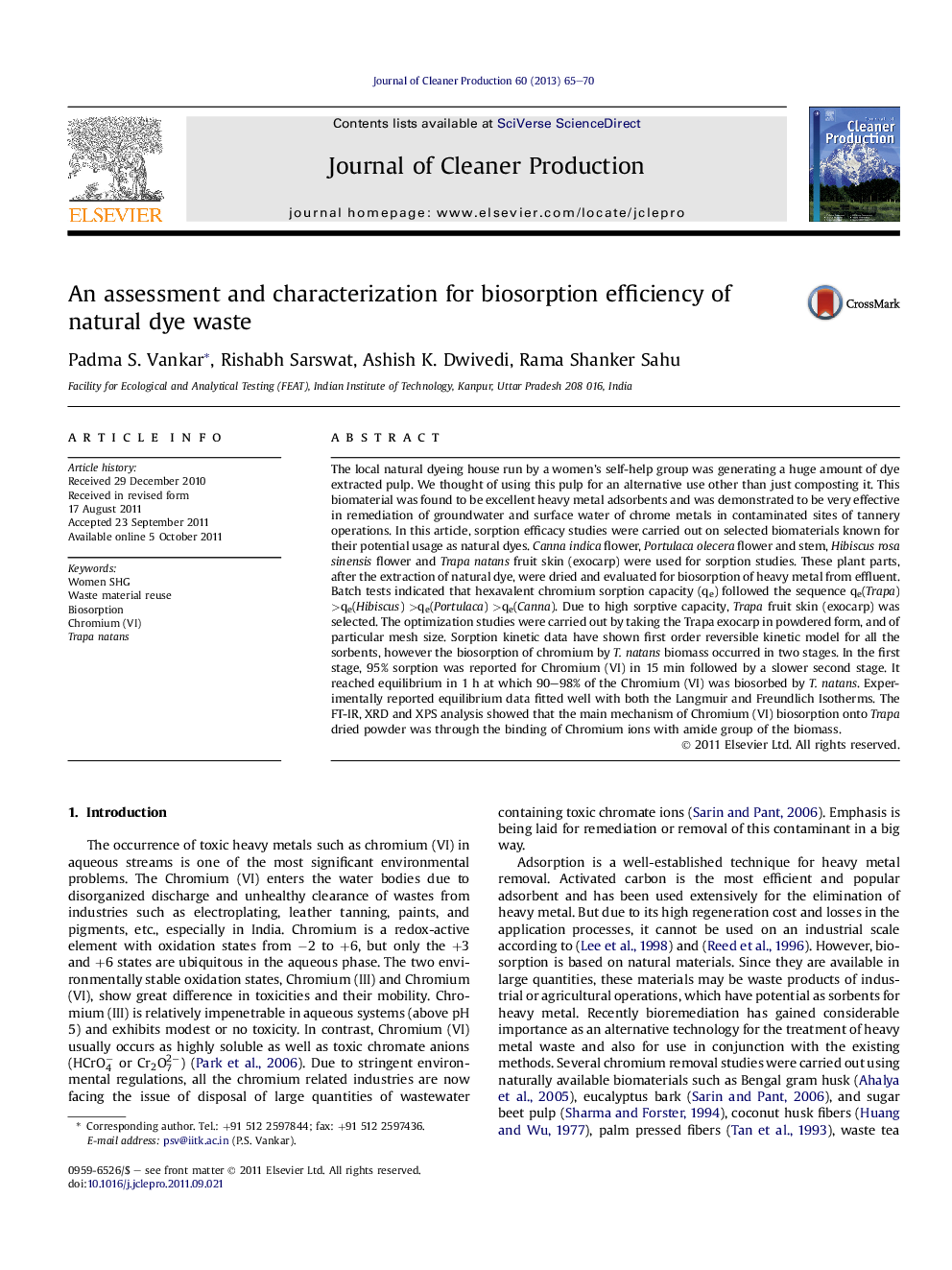| Article ID | Journal | Published Year | Pages | File Type |
|---|---|---|---|---|
| 8107164 | Journal of Cleaner Production | 2013 | 6 Pages |
Abstract
The local natural dyeing house run by a women's self-help group was generating a huge amount of dye extracted pulp. We thought of using this pulp for an alternative use other than just composting it. This biomaterial was found to be excellent heavy metal adsorbents and was demonstrated to be very effective in remediation of groundwater and surface water of chrome metals in contaminated sites of tannery operations. In this article, sorption efficacy studies were carried out on selected biomaterials known for their potential usage as natural dyes. Canna indica flower, Portulaca olecera flower and stem, Hibiscus rosa sinensis flower and Trapa natans fruit skin (exocarp) were used for sorption studies. These plant parts, after the extraction of natural dye, were dried and evaluated for biosorption of heavy metal from effluent. Batch tests indicated that hexavalent chromium sorption capacity (qe) followed the sequence qe(Trapa) >qe(Hibiscus) >qe(Portulaca) >qe(Canna). Due to high sorptive capacity, Trapa fruit skin (exocarp) was selected. The optimization studies were carried out by taking the Trapa exocarp in powdered form, and of particular mesh size. Sorption kinetic data have shown first order reversible kinetic model for all the sorbents, however the biosorption of chromium by T. natans biomass occurred in two stages. In the first stage, 95% sorption was reported for Chromium (VI) in 15 min followed by a slower second stage. It reached equilibrium in 1 h at which 90-98% of the Chromium (VI) was biosorbed by T. natans. Experimentally reported equilibrium data fitted well with both the Langmuir and Freundlich Isotherms. The FT-IR, XRD and XPS analysis showed that the main mechanism of Chromium (VI) biosorption onto Trapa dried powder was through the binding of Chromium ions with amide group of the biomass.
Keywords
Related Topics
Physical Sciences and Engineering
Energy
Renewable Energy, Sustainability and the Environment
Authors
Padma S. Vankar, Rishabh Sarswat, Ashish K. Dwivedi, Rama Shanker Sahu,
